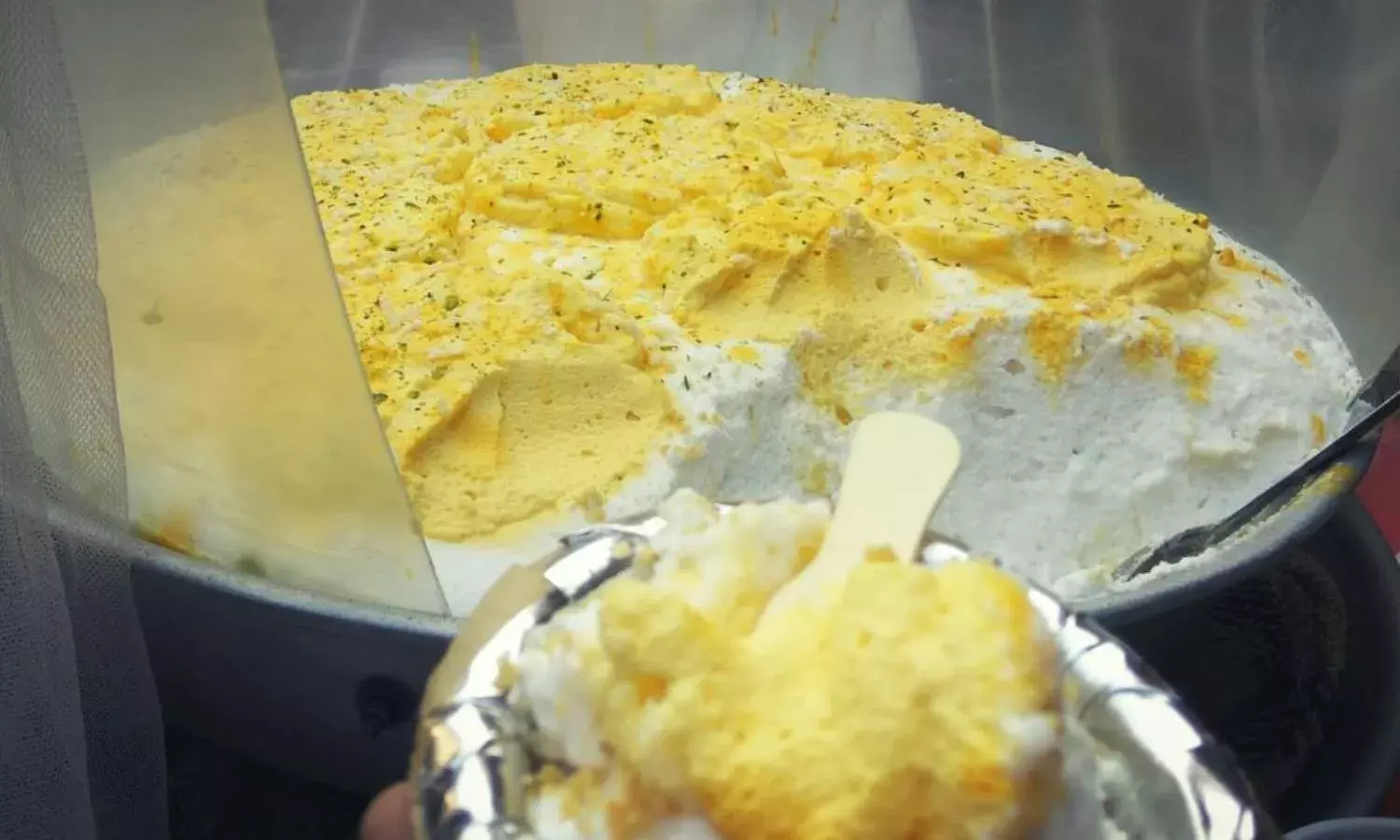If You Could Eat the Clouds... It Would Be Nimish/ Daulat ki Chaat
Winter Food Trail, Daulat ki Chaat

Winters bring a dramatic change in Delhi’s food scene. The city’s roadsides see the appearance of peanut sellers and roasted sweet potato sellers. The samosas, jalebi and the kebab stalls start looking more alluring. But there is another thing that is special to winters in Delhi: daulat ki chaat.
Daulat means wealth, and indeed daulat ki chaat possesses a lot of exclusivity to it. First, it is exclusive to winters. Second, it is available only in old Delhi. And then, it’s a chaat unlike any you’ve ever tasted.
Daulat ki chaat is not a chaat in the conventional sense. By chaat, a dilliwala or northerner would understand a snack that is spicy, hot and finger licking good. But daulat ki chaat is not quite a chaat at all - it is a dessert, sort of a souffle.
There is no clear explanation how it got its name. Some say it was being sold in Delhi in the early days by a man named Daulat, while some say the dish is so delicate and ephemeral that it should be prized as money, and hence the name daulat ki chaat.
Interestingly, the same ‘chaat’ is available in other parts of north India, but it goes by different names, such as malai makhan in Kanpur, malaiyo in Varanasi, and nimish in Lucknow.
If you ever need to define the ‘melt in your mouth’ quality, then daulat ki chaat has exactly that. The moment you put it in your mouth, it just melts away. So much so, that a person trying it for the very first time is very likely to be left bemused.
How could something, that by the look of it possesses a definite volume, just disappear into thin air the moment you put it in your mouth, leaving in its wake only a delectable flavour, slightly sweet?
To clear the confusion you would immediately take another scoop, this time a bit bigger. The result would be the same.
It is only now that it hits you. As kids we all imagined tufts of clouds in the sky as huge dollops of ice cream and wondered what it would be like to eat them up. Well, that’s exactly what eating daulat ki chaat is like. It’s like eating clouds.
Essentially, what you get as daulat ki chaat is the froth of milk, flavoured with kesar (saffron) and lightly sprinkled with crushed nuts and khoya (thickened milk).
Turning milk froth into a dessert is a time consuming and patient job. In old Delhi the process usually begins every evening around 7.
The first cream is added to the milk - 8 or 9 kilos of it.
Then it is given a thin covering of cloth and placed in the open under the winter night sky.
This, the makers of daulat ki chaat point out, is the most important step. “The dew works on the milk throughout the night. Then early morning around 4 am, we add a bit of saffron to the milk and start whisking it. After some vigorous whisking froth starts forming on the surface. This froth won’t form if the milk is not placed under the open winter night sky,” says Adesh Kumar, from the famous Khemchand Adesh Kumar daulat ki chaat maker, originally from Moradabad in U.P., who is credited with introducing the dessert to the Delhi food scene. He sets his stall in Kinari Bazaar and Gali Paranthe wali.
The chefs keep collecting the froth in a separate bowl as they whisk it continuously for a couple of hours. The froth so collected is then flavoured with powdered sugar. Before being served it is lightly sprinkled on top with crumbled khoya and crushed dry fruits. This is your daulat ki chaat. A portion of this delight will cost you 50 rupees.
Daulat ki chaat appears on the Delhi food scene usually after Diwali, and lasts till the end of February. During this time on any given day around 25 stalls are set up in different parts of Old Delhi.
You are likely to run into them at the Chawari Bazar metro station, on Gali Paranthe Wali, on the Daryaganj main road, in Kinari Bazaar, on Nai Sadak, in Chandini Chowk and in Paharganj.
Vinod Kumar, who learned his art of making daulat ki chaat from his uncle, sets up his stall near Imperial Cinema in Paharganj. “I make daulat ki chaat only during the four winter months; the rest of the year I sell the usual bhalla-papri. But daulat ki chaat is a more difficult thing, especially as it takes a lot of time to prepare, and then it does not last beyond a few hours.”
That should make a strong case for you to relish your daulat ki chaat, before it vanishes with the Delhi winter!



